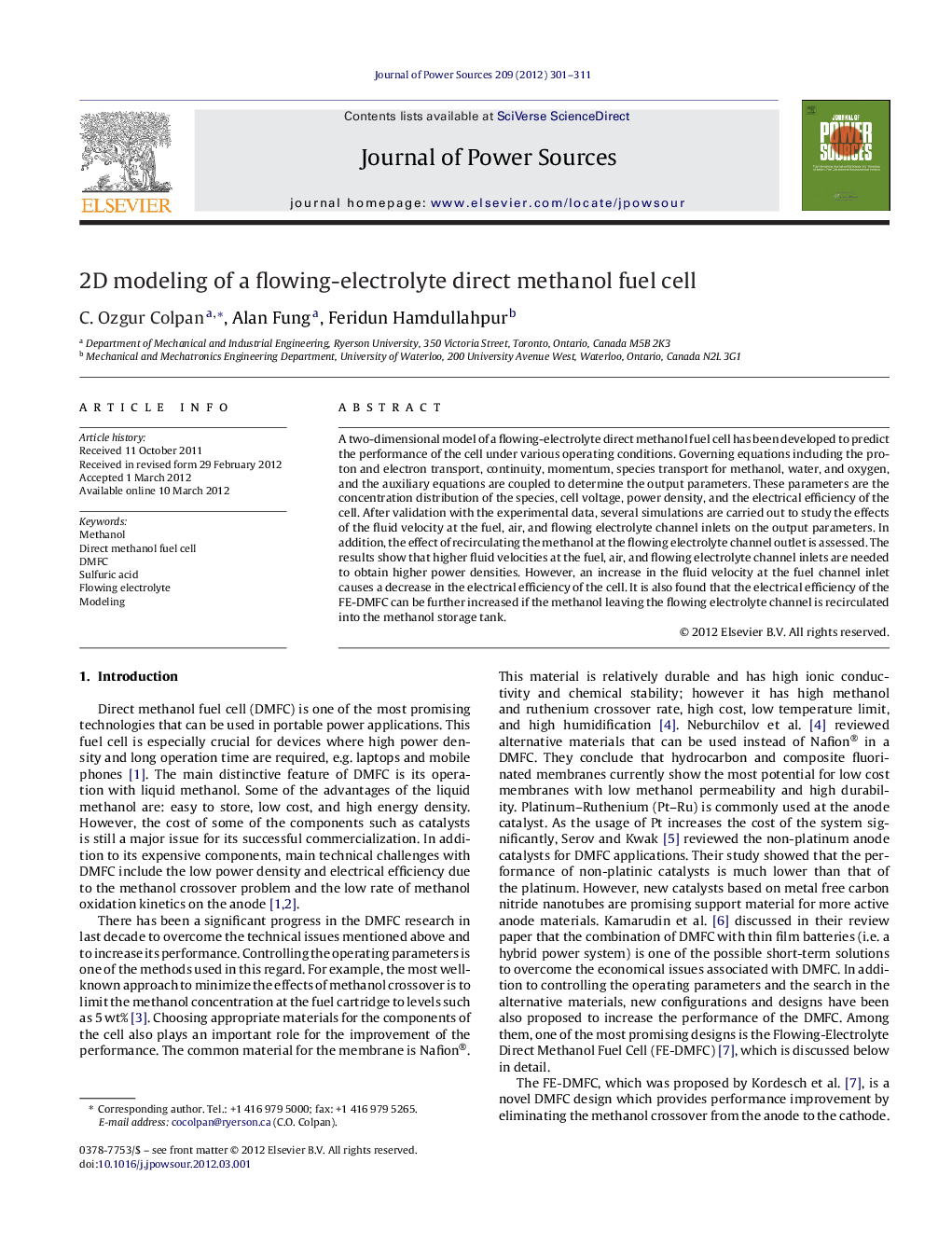| Article ID | Journal | Published Year | Pages | File Type |
|---|---|---|---|---|
| 1284553 | Journal of Power Sources | 2012 | 11 Pages |
A two-dimensional model of a flowing-electrolyte direct methanol fuel cell has been developed to predict the performance of the cell under various operating conditions. Governing equations including the proton and electron transport, continuity, momentum, species transport for methanol, water, and oxygen, and the auxiliary equations are coupled to determine the output parameters. These parameters are the concentration distribution of the species, cell voltage, power density, and the electrical efficiency of the cell. After validation with the experimental data, several simulations are carried out to study the effects of the fluid velocity at the fuel, air, and flowing electrolyte channel inlets on the output parameters. In addition, the effect of recirculating the methanol at the flowing electrolyte channel outlet is assessed. The results show that higher fluid velocities at the fuel, air, and flowing electrolyte channel inlets are needed to obtain higher power densities. However, an increase in the fluid velocity at the fuel channel inlet causes a decrease in the electrical efficiency of the cell. It is also found that the electrical efficiency of the FE-DMFC can be further increased if the methanol leaving the flowing electrolyte channel is recirculated into the methanol storage tank.
► We developed a new two-dimensional multi-physics model of a FE-DMFC. ► We studied the effects of the fluid velocity at all the channel inlets. ► Channel inlet velocities should be all increased to obtain higher power densities. ► Increasing the fuel channel inlet velocity decreases the electrical efficiency. ► FE-DMFC should be recirculated to further increase the electrical efficiency.
